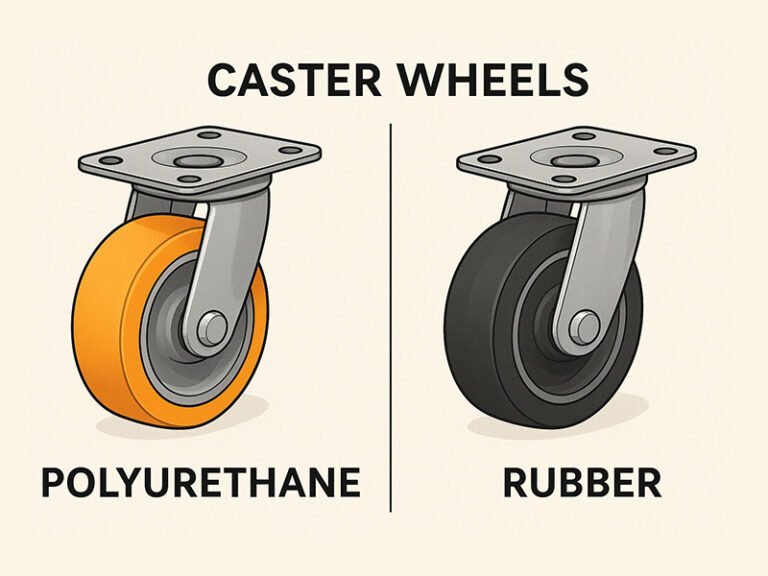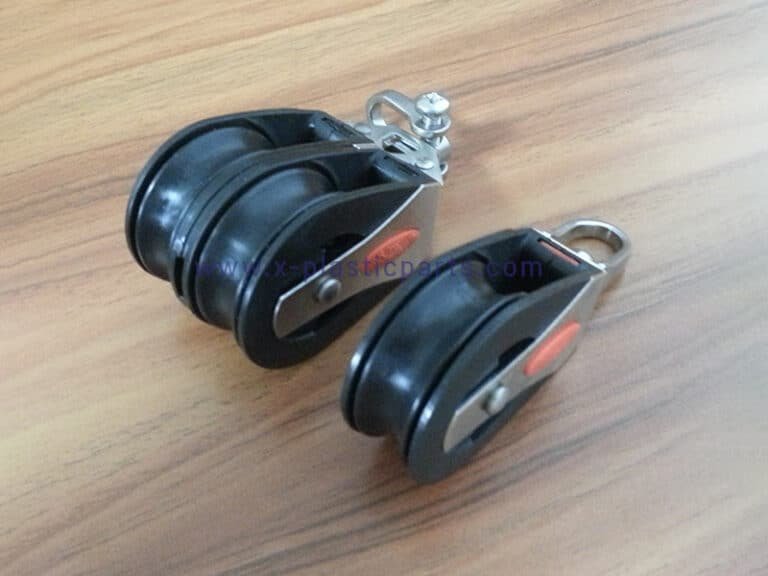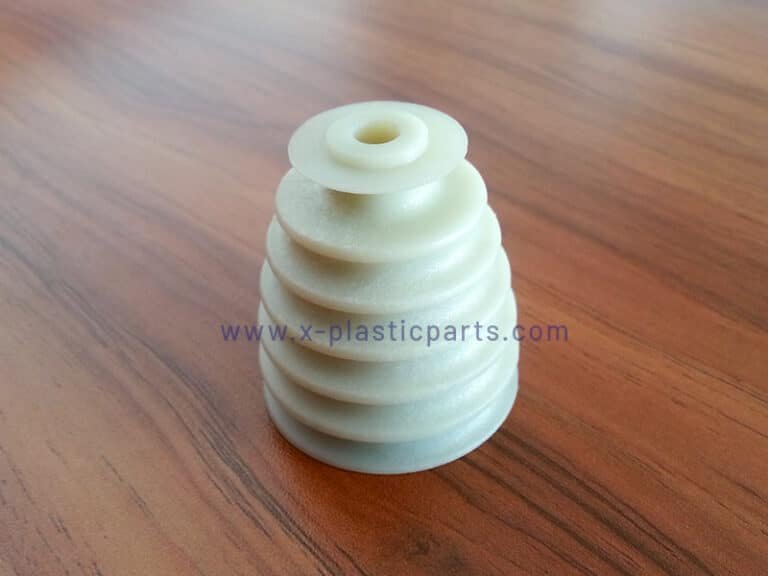When it comes to selecting the ideal caster wheels for applications, the most common and important comparisons is polyurethane vs rubber caster wheels. Both materials have unique physical properties and performance characteristics that make them better suited to different environments, load requirements, and operational priorities. In this article, we will explain what rubber wheels and polyurethane casters are and detail the key differences between them.
What Are Rubber Caster Wheels?
Rubber caster wheels are typically made from natural or synthetic rubber compounds mounted on cores of metal or plastic. Their softer and more elastic makeup gives them excellent shock absorption and cushioning properties. This makes rubber wheels highly effective at reducing noise and minimizing vibrations during movement.
The high traction of rubber caster wheels offer good grip on smooth, indoor surfaces, and they are less likely to damage floors due to their softer contact material. Rubber wheels excel in environments with smooth indoor surfaces such as hospitals, offices, and retail stores, where quiet operation and minimal vibration are essential for comfort and safety. However, rubber does have some limitations in terms of durability and load capacity. It tends to wear out faster under heavy loads or abrasive conditions, and its resistance to chemicals, oils, and harsh environments is generally lower compared to polyurethane wheels.
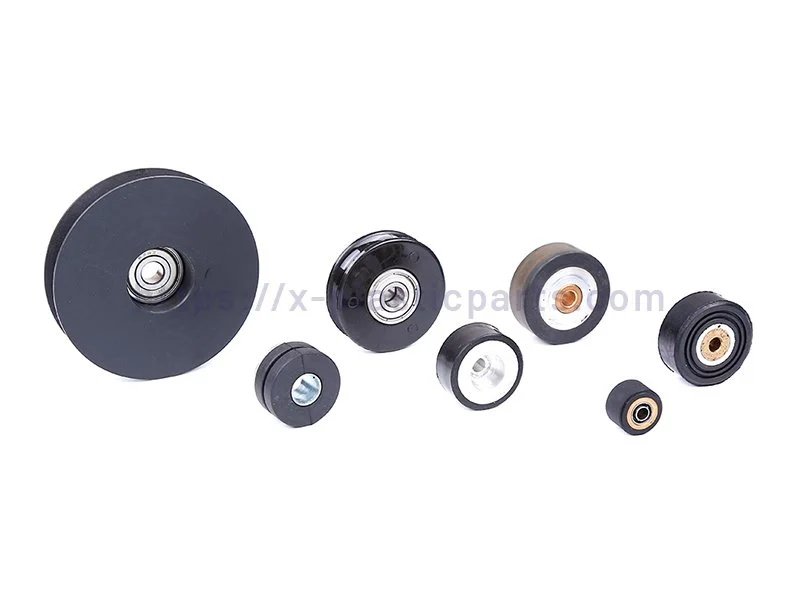
What Are Polyurethane Casters?
Polyurethane (often referred to as PU) caster wheels are made from a synthetic polymer that combines the elasticity of rubber with enhanced toughness and chemical resistance. They typically feature a metal or plastic core over which a thick layer of polyurethane is molded. This unique composition gives polyurethane wheels several performance advantages.
Key properties of polyurethane casters include superior load-bearing capacity, excellent abrasion and wear resistance, and prolonged lifespan even when used in demanding industrial settings such as manufacturing floors, warehouses, and distribution centers. PU wheels resist deformation, cuts, and chemical exposure better than rubber wheels. While slightly harder than rubber, modern polyurethane wheels still provide a quiet and smooth roll, particularly when custom formulations are selected.
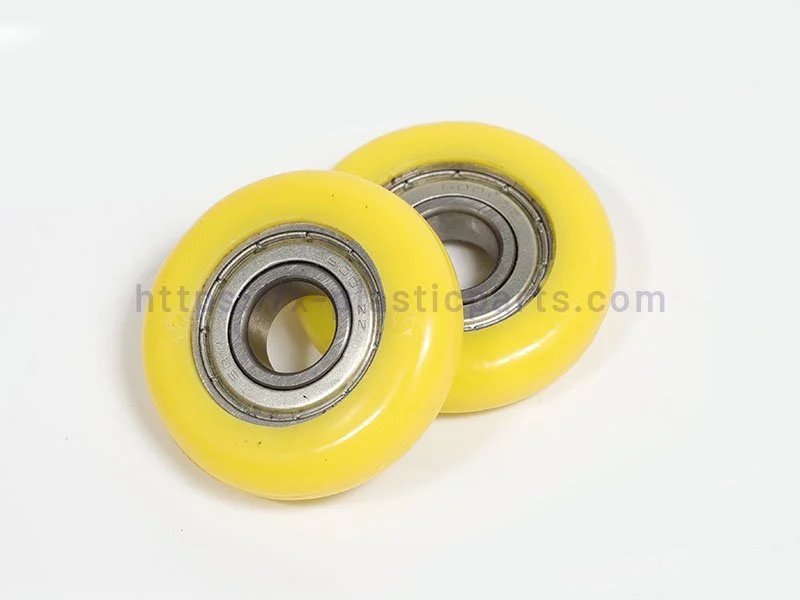
Understanding the Differences Between Rubber and Polyurethane Caster Wheels
When deciding between rubber vs polyurethane casters, understanding their differences is crucial for aligning your choice with operational needs.
Load Capacity
Polyurethane caster wheels excel in handling heavy loads, often supporting 1,000 pounds or more without losing shape or developing flat spots, making them ideal for heavy-duty industrial applications like warehouse pallets or manufacturing equipment. In contrast, rubber casters, with a capacity of 300-500 pounds, are better suited for lighter loads, such as office carts or medical equipment, but wear down faster under constant pressure.
Durability
In the polyurethane casters vs rubber debate, polyurethane’s superior toughness gives it a lifespan up to three times longer than rubber. Its resistance to abrasion and tearing ensures consistent performance in demanding environments, while rubber is prone to cracking or degradation, especially under heavy or prolonged use.
Shock Absorption
Rubber’s softer composition (67-75 Shore A) absorbs shocks effectively, cushioning equipment on uneven surfaces like gravel or cracked floors, reducing vibrations for smoother operation. Polyurethane, with its harder structure (83-95 Shore A), provides less shock absorption.
Rolling Resistance
Polyurethane’s lower rolling resistance reduces the effort needed to move heavy loads, unlike rubber, which requires more force.
Environmental Resistance
Polyurethane resists chemicals, oils, and grease, while rubber degrades in such conditions, limiting its use in harsh environments.
Noise
Rubber wheels operate quietly, making them ideal for noise-sensitive settings like hospitals, schools, or offices. Polyurethane wheels, while durable, produce more noise, which is suitable in industrial environments.
Cost
Rubber wheels are generally more affordable upfront, making them a budget-friendly choice for lighter duty applications. However, PU wheels offer better long-term value due to polyurethane’s extended lifespan and reduced maintenance needs, especially in heavy-duty or harsh environments.
Application Scenarios
When comparing polyurethane vs rubber wheels for surface adaptability, rubber excels on smooth surfaces, offering excellent grip and traction, particularly in wet conditions, making it suitable for indoor settings like hospitals or retail spaces. Polyurethane, however, performs better on rough or uneven terrain due to its toughness and abrasion resistance, which prevents wear on harsh surfaces like outdoor concrete or industrial floors with debris.
Choose the Right Wheels for Your Needs
Selecting between polyurethane vs rubber casters depends heavily on your application’s unique requirements. Assess load requirements, for heavier euqipment, polyurethane wheels provide better performance and longevity. If noise control and cushioning are vital, rubber wheels are preferable.
Flexiparts offers a wide variety of both polyurethane casters and rubber wheels to diverse industrial applications. We can also provide custom options tailored to your specific size, hardness, color, and performance needs. Contact us today to find the perfect polyurethane vs rubber caster wheels for your industrial needs and receive expert guidance on custom caster wheel orders.

